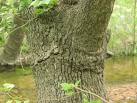American Sycamore Tree Information
Images of American Sycamore:






American Sycamore grows in the following 37 states and provinces:
Alabama, Arkansas, Colorado, Connecticut, Delaware, Florida, Georgia, Hawaii, Illinois, Indiana, Iowa, Kansas, Kentucky, Louisiana, Maine, Maryland, Massachusetts, Michigan, Minnesota, Mississippi, Missouri, Nebraska, New Hampshire, New Jersey, New York, North Carolina, Ohio, Oklahoma, Ontario, Pennsylvania, Rhode Island, South Carolina, Tennessee, Vermont, Virginia, West Virginia, WisconsinInformation about American Sycamore:
The Platanus Occidentalis is commonly known as the American Sycamore, Buttonball Tree, Plane Tree as well as Sycamore.
The currently accepted scientific name for sycamore is Platanus occidentalis L. (Platanaceae) . There are no accepted infrataxa. The London plane tree (P. xacerifolia Willd.) is a hybrid of Oriental plane (P. orientalis) and sycamore and perhaps includes a number of backcrosses .The range of sycamore extends from southwestern Maine west to extreme southern Ontario, southern Wisconsin, Iowa, and extreme eastern Nebraska; south to south-central Texas; and east to northwestern Florida and southeastern Georgia. It also occurs in the mountains of northeastern Mexico . Sycamore has become naturalized to some extent from plantations outside of its native range, chiefly in southern Maine, southern Michigan, southern Minnesota, and eastern and southern Iowa .Sycamore is found in quantity only in bottomland forests, particularly of elm-ash-cottonwood (Ulmus spp.-Fraxinus spp.-Populus deltoides) types as defined by Shifley and others , and cottonwood-willow (Salix spp.) types. It usually occurs singly or in small groups . Sycamore is found occasionally along intermittent streams within upland stands of oak-hickory (Quercus spp.-Carya spp.) communities. It is a major pioneer species in the floodplains of large rivers . In the Southeast pure stands of 40 to 100 acres (16-40 ha) are sometimes formed; it rarely forms extensive pure stands in the northern parts of its range . In the northern states sycamore is rarely the dominant species; it increases (replacing silver maple ) with decreasing latitude . Sycamore is listed as a dominant or indicator species in the following publications: 1) The natural forests of Maryland: an explanation of the vegetation map of Maryland 2) The natural communities of South Carolina 3) Land Classification in the Blue Ridge province: state-of-the-science report 4) Forest management of floodplain sites in the northeastern United States 5) Management of bottomland hardwoods 6) Ecological communities of New York State 7) Classification and evaluation of forest sites on the northern Cumberland Plateau 8) Classification and evaluation of forest sites on the Natchez Trace State Forest, State Resort Park, and Wildlife Management Area in west Tennessee Some of the information provided here is attributed to:Sullivan, Janet. 1994. Platanus occidentalis. In: Fire Effects Information System, [Online]. U.S. Department of Agriculture, Forest Service, Rocky Mountain Research Station, Fire Sciences Laboratory (Producer). , available at the USDA Fire Effects Information System (FEIS) website